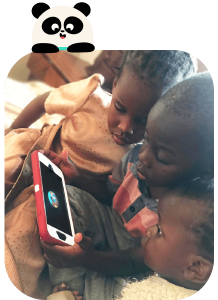There’s nothing more important for a parent than their child feeling loved, accepted, and understood. Children, just like everyone else, like to experience and express love in a particular way. For some people, hugs and kisses are a great way of expressing your affection. Others don’t like being touched and would prefer to receive a gift or have some help with their chores. A person’s preference in the way they express and receive love is known as their love language.
Attention and affection from a parent have proven to make kids feel emotionally content, confident, and less anxious. However, if you demonstrate your love for your child in a different manner than the one they prefer, they may feel uncomfortable and misunderstood. This is why it’s important to learn and understand the love language of your child.
The Different Types Of Love Languages to Child’s
There are five different types of love languages, as stated by Gary Chapman in his book, The 5 Love Languages: The Secret to Love that Lasts. They are:
- Gifts: Receiving items or surprises (experiences)
- Physical Touch: Receiving hugs, high-fives, or cuddles
- Quality Time: Spending one-on-one time together
- Service: Helping out with tasks
- Words of Affirmation: Hearing praise and positive words
Love can be shown in several ways, but the first and foremost is through physical affection. Hugs, kisses, and cuddles are incredibly important, especially for young children. Infants respond positively to physical touch and feel comforted long before the word “love” is attached to an action or verbal expression. As a child grows and they are introduced to different forms of expressing love such as verbal affirmations or helping someone else with a task, they may start to enjoy cuddles and physical forms of affectionless.
Words of affirmation are any form of verbal praise that is genuine and affirms how much love you have for your little one. If you ask a child with this love language how they know they are loved, they may say things like: “Because Mom and Dad tell me when I’ve done a good job on a school project,” “Because they cheer for me at all my basketball games,” or “Because they are always telling me how proud they are of me and how hard I work.”

Understanding your child’s love language
Interpreting your child’s love language takes a bit of observational work. Pay close attention to how your child displays affection to you, other children, family members, and even their dolls and stuffed animals. These observations may reveal how to make your child feel loved and valued. If you get home from a busy day at work and all your child wants to do is babble about the day, remember that your child is expressing love.
However, if you are unable to fully comprehend your child’s love language through observation alone, you can try expressing love in different ways and note their reaction to each of them. You could also take a test like this one to help determine your child’s love language.
As you begin exploring the different love languages and working to become fluent in your child’s, it’s important to keep three things in mind:
- This is an art—not a science. We’re dealing with emotions, not mathematical equations. Be prepared to make adjustments in your way of showing affection to your child.
- Regardless of what your child’s primary love language is, you need to dabble in all five languages. You can’t spend quality time with a child because his or her love language is “service.”
You need to know what your own love language is. How do you best show and receive love?

Parent-child Communication During A Pandemic
Expressions of love have taken on a greater importance as the COVID-19 pandemic has affected virtually every family’s daily life. With so many changes occurring in children’s lives, from having virtual classes and not being able to meet friends in big groups, to spending more time with parents as they work from home, kids look to their parents for stability and security. It’s now more important than ever to show your kids love in their preferred love language.
Parents and caregivers should also express love for their partners in front of their children with affectionate touches, hugs, and demonstrations of respect, such as saying “please” and “thank you” to their partners. These are then communicated to their children as another kind of love language.
Decoding your child’s love language is key to having an affectionate relationship that will last forever. Everyone has their own unique expression of love that consists of the five love languages. While some may prefer one over the other, it’s important to remember that understanding your child’s love language is a rewarding challenge that will benefit both you and your child for years to come.





